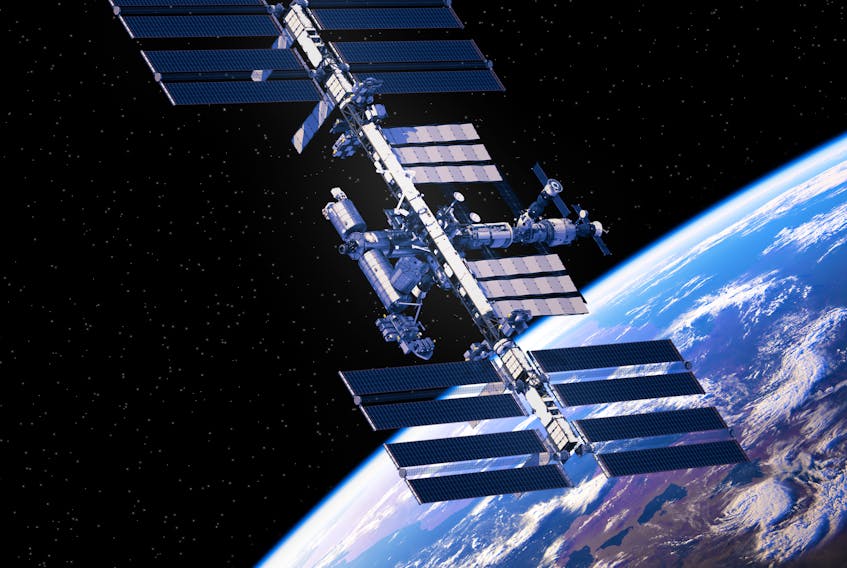We've all read or heard about the bright, potentially naked-eye, comets that frequent our night skies each year.
There are countless others that are in the sky, but being well below naked-eye or even binocular visibility, they require a decent-sized telescope to spot. For those interested in following the passage of the more-distant and fainter comets across the night sky, there are several online sites that list which comets are within or nearing our solar system, their magnitude, position in the night sky, date and time visible, etc. An excellent site is http://aerith.net/comet/future-n.html
On occasion, you might notice a news headline about a newly-discovered asteroid that will be zipping past the Earth; the news bulletin is often aired only a day or two before the event, or, sometimes, after the fact. Fortunately for us here on Earth, these asteroids are relatively small (though still capable of significant damage should they strike a populated area), and are considerable distance from the Earth (usually well outside the orbit of our moon). NASA has a network of telescopes around the globe monitoring the night skies for any asteroids that pose at least the potential of intercepting our planet (referred to as Near Earth Objects or NEOs). Go to https://theskylive.com/near-earth-objects to find a list of NEOs that NASA is keeping an eye on.
A number of my readers have written asking about tiny, fast-moving points of light they've observed zipping across the night sky. Often, they make note that these points of light either suddenly appeared or disappeared in the section of the sky they were observing at the time.
"Alien spaceships?" they query. No, these points of light are satellites orbiting the Earth at high altitudes. They appear as points of light because they are illuminated by the sun's light; appearing suddenly as they exit Earth's shadow into the sunlight, or suddenly disappearing as they enter Earth's shadow. There are literally thousands of them zipping around our planet, leaving one wondering how it is they don't crash into one another.
Fortunately, they are all monitored and tracked by the nations that launch them into orbit, so there is little likelihood of them colliding with one another (although it has happened). For the most part, they present no problem for night sky observers, as they are usually very small pin-points of light that are always in motion. They do, however, pose a problem for astro-photographers taking long, time exposure shots of the night sky, as the travelling satellite may pass through the camera's field of view and be captured on film as a thin streak of light, essentially ruining the photo. Unfortunately, this problem has been, and will be, further exacerbated by Elon Musk's plan to launch 12,000 (yes, 12,000) SpaceX Starlink satellites (480+ to date) into low Earth orbit in the coming years. If tracking satellites is your thing, go to www.satview.org/
One light that whizzes across the night sky that readers may be interested in looking for is the International Space Station (ISS). Launched on Nov. 20, 1998, the ISS circles the Earth in approximately 93 mins (just over 15 orbits/day) at an average speed of 27,600 kilometres/hour, and at an average altitude of 400 kms. When it passes overhead, it is readily visible as a very bright (sometimes reaching magnitude -6 ), gold-tinged point of light (you can actually make out the space station's structure in binoculars or in a cell phone photo) moving steadily across the night sky. If you want to regularly watch the ISS pass over where you live, go to https://spotthestation.nasa.gov/, and click on the "sign up" icon to receive an e-notice whenever the ISS will be crossing your night sky.
This week's sky
Mercury is now heading towards inferior (passes between Earth and the sun) solar conjunction on Oct. 25, and, being very close to the sun, can't currently be seen.
Venus (magnitude -4.05) remains a pre-dawn object in the eastern sky, rising around 4 a.m. on Oct. 12 ( 4:15 a.m. by Oct. 18), and reaching a height of 30 degrees above the eastern horizon before fading with the dawn shortly after 7 a.m.
Mars, extremely bright right now (magnitude -2.62; brighter than Jupiter), is heading for opposition (directly opposite the sun as seen from Earth) on Oct. 13. The Red Planet is visible in the evening sky around 7:30 p.m., seven degrees above the eastern horizon, reaching an altitude of 49 degrees above the southern horizon by about 1:10 a.m., before disappearing from sight once it sinks below seven degrees above the western horizon around 6:45 a.m.
Jupiter (magnitude -2.3) is also an early evening object at present, visible 21 degrees above the southern horizon by about 6:50 p.m., never getting higher in the night sky, before being lost from sight after sinking below eight degrees above the southwest horizon around 10:20 p.m.
Saturn (magnitude +0.52) continues to shadow Jupiter across the late evening sky (visible just to the upper left of Jupiter), appearing in the southern evening sky around 7 p.m., and disappearing from view shortly after Jupiter, when it sinks below 10 degrees above the southwest horizon shortly before 10:40 p.m.
Until next week, clear skies.
Events:
- Oct. 13 - Mars at opposition
- Oct. 16 - New Moon; Moon at perigee (closest to Earth)
Glenn K. Roberts lives in Stratford, P.E.I., and has been an avid amateur astronomer since he was a small child. He welcomes comments from readers at [email protected].









